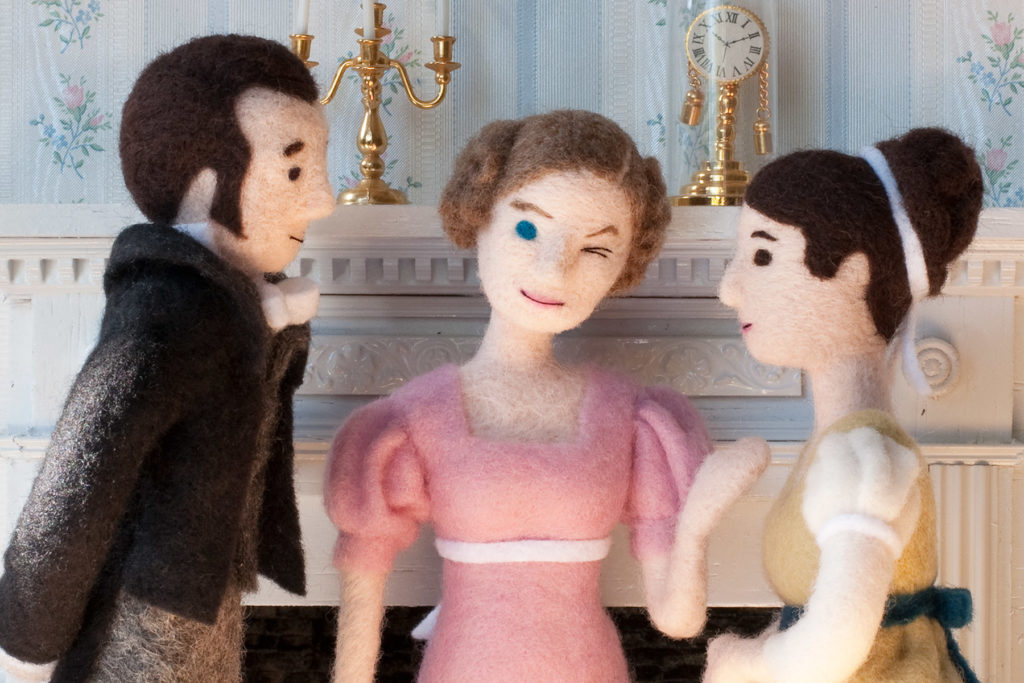
Jane Austen was a fan of two important 18th century novelists, Samuel Richardson and Henry Fielding. Richardson was famous for writing epistolary novels—that is, novels told through journals, letters, and other documents—like Pamela (1740) and Clarissa (1748). Fielding, best known for the novel Tom Jones (1749), satirized Richardson in novels like Shamela (1741) and Joseph Andrews (1742). Austen liked the intimacy and immediacy of Richardson’s first-person narratives, but she also admired the detachment and irony of Fielding’s more traditional third-person novels. How was a gal supposed to choose between influences, especially rival influences?
Well, she didn’t. Instead, she combined them through a little technique known as “free indirect discourse” or the free indirect style. That’s when you present a character’s interior monologue in the third person past tense. Here’s an example:
Interior monologue: I’m so sick and tired of him!
Free indirect discourse: She was so sick and tired of him!
This technique allows the writer to get close to the thoughts of a character without having to use first person. It also allows the writer to move in and out of a character’s thoughts seamlessly. Austen didn’t invent this technique, but she was the first writer to get serious mileage out of it.
Consider the famous first line of Pride and Prejudice: “It is a truth universally acknowledged, that a single man in possession of a good fortune must be in want of a wife.” This is the implied author speaking. Like Fielding, Austen wanted to reserve the right to make sly, ironic comments as the author, which meant using an omniscient third-person point of view.
However, like Richardson, she also wanted to “surrender” to her characters’ own ways of thinking, especially at moments of emotional intensity. That’s where free indirect discourse comes in. For example, when Mr. Darcy proposes to an astonished Elizabeth in Chapter 34, Austen writes, “That she should receive an offer of marriage from Mr. Darcy! That he should have been in love with her for so many months!” That’s really Elizabeth thinking, “That I should receive an offer of marriage from Mr. Darcy! That he should have been in love with me for so many months!” Austen is listening in on Elizabeth’s thoughts and transcribing them in the third person past tense.
By pioneering the use of this technique, Austen was able to combine the intimacy of first person with the detachment of third. Basically, she found a way to have her cake and eat it, too—and in so doing became the literary child of Richardson and Fielding!
